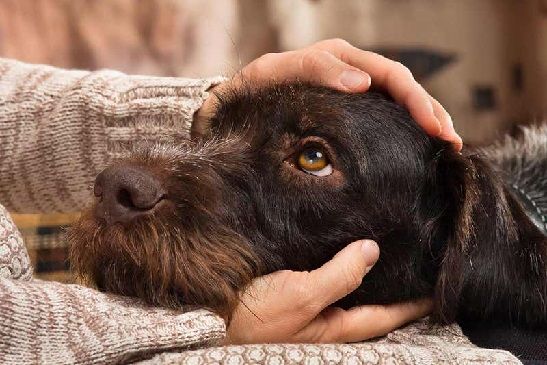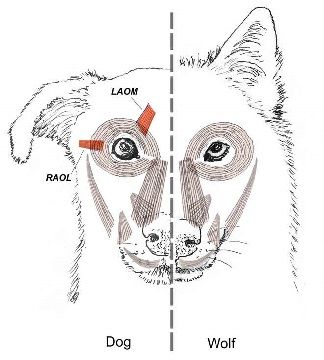Dogs Evolved 'puppy Dog Eyes' To Capture Your Heart
Jul 26, 2019 • 29 views
New researches points out to how dogs have evolved a group of new facial muscles over thousands of years to better express and communicate with humans. To be specific, muscles around the eyes of dogs allows them to create expressions mimicking that of the humans when they are sad.

The research was done as anatomical and behavioral comparative study of wolves and dogs especially on their anatomy. It suggests that the facial muscular structure of the wolves and the dogs were very similar in the beginning. But there was a slight difference in the muscles above their eyes; whereas the wolves have long strands of muscles on the eyebrows, in case of dogs it is much smaller helping them to raise their inner eyebrows much more than wolves possibly could. It also showed that of raised their inner eyebrows more when human looked at them compared to when they did not.

This feature of the dogs allows them to create a more infant like resemblance as this specific inner eyebrow movement makes their eyes look much larger, at the same time creating an expression that humans could produce when they are sad or a human-like illusion.

A part of research also included observing the changes in expressions of wolves and dogs when exposed to human for a span of nearly two minutes. This has a similar outcome as well, the dog was found to be able to raise its inner brows to a much higher extent than that of the wolf. This is expected to have influenced the human while deciding to domesticate dogs over wolves hence ‘puppy dog eyes‘trait to be continued for future generations. It is to be noted that this striking difference in formation separated the two species nearly 33,000 years ago, hence could indicate approximately the time when human started domesticating dogs.

Co-author of the paper, Professor Anne Burrows said, on the experiment while determining whether this inner eyebrow movement is caused due to evolution they compared the facial behavior and anatomy of the dogs and wolves. One of the scientists said how difficult it is to study soft tissues as they generally doesn't survive in the fossils.
The scientists named the movement as the Action Unit (AU) 101. They found this specific piece set of muscle fibres doesn`t exit consistently in wolves and were an irregular cluster, whereas wolves are considered to be their closest living relative. These muscle fibers are thin enough to see through them, yet they have such a powerful effect, clearly indicating to the fact that facial expression is very important while getting attention as well as its importance in social interaction.
Even for the researchers it is really wonderful matter to know how these slightest differences in facial expression might help defining the relationship between two very different species; human and dog.
Although a few of the dog species did not have the Action Unit (AU) 101 movement including the Siberian husky being a more ancient breed.

Another group of researchers also suggest the theory regarding that bond between human and dog. They say that humans` have a preference for other living beings which have white parts in the eye where the significant AU 101 movements exposes that white part even more led to better bong between human and dog.
Although it is known that humans first brought wolves to domesticate, but it was not known why it slowly drifted towards dogs. But this research has helped to understand some of the dominant reasons for dog domestication.
